When this 1,850-foot concrete-arch highway bridge was built on the White River in a remote region of northern Arkansas - prior to the construction of upriver, flood-control dams - flash floods occurred frequently, sometimes causing the water to rise as much as one foot per hour. Construction under these conditions presented a clear danger, so project managers specified both a design and an innovative construction method appropriate to the problem of building across a perilous stretch of unpredictable river.
Arch
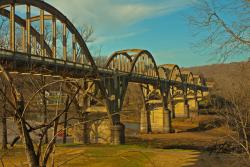
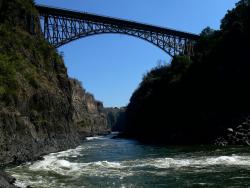
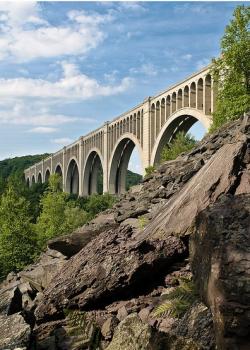
This majestic viaduct was built during the golden age of railroading. It was at the western end of a major readjustment in grade and alignment of the Erie-Lackawanna Railroad, and had double tracks to carry the trains across the valley of Tunkhannock Creek. The Hallstead cutoff (between Scranton, Pennsylvania and Hallstead, New Jersey) reduced passenger travel time by 20 minutes, and freight travel time by over an hour.
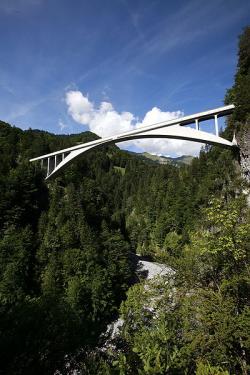
The Salginatobel Bridge, spanning the Salgina Valley ravine, is the earliest surviving three-hinged, hollow box arch bridge designed by Robert Maillart.
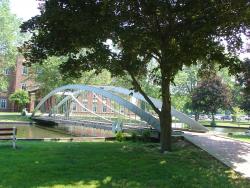
Designed, patented, and built by Thomas W.H. Moseley, this arched 96-foot span bridge preceded by years the standard use of wrought iron for bridges. For the first time in the United States, Moseley incorporated the use of riveted wrought-iron plates for the triangular-shaped top chord.
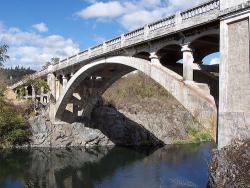
The Rogue River Bridge was the most advanced concrete bridge in America when it was built. Distinguished bridge engineer Conde McCullough employed the techniques of Frenchman Eugene Freyssinet to create thin, graceful concrete arches for this seven-span structure.
Pre-compression of the concrete arch was achieved and, as a result of its success, pre-stressing became one of the hallmarks of American bridge building techniques.
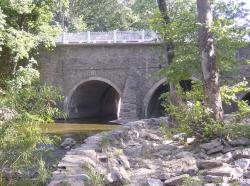
"For 273 years, the little stone bridge that carries Frankford Ave. across Pennypack Creek has been doing its humble job with a minimum of attention..."
- Gerald McKelvey, The Philadelphia Inquirer, September 16, 1970
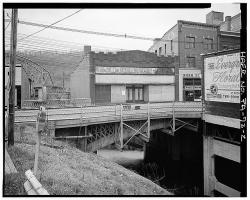
Not only was Dunlap's Creek Bridge the first cast-iron bridge in America, it was the first metal bridge anywhere to use what its builder, Capt. Richard Delafield, U.S. Army Corps of Engineers, described as "standardized, interchangeable, manufactured parts." The bridge was built as part of the federal government's effort to make repairs on the National Road before handing authority over to the states. Dunlap's Creek at Brownsville was an especially troublesome crossing, having destroyed three previous bridges since 1801.
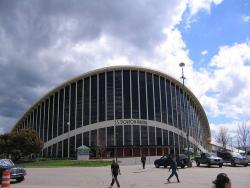
The Dorton Arena was the first use of a cable-supported roof system in the world. Commissioned in 1949 by North Carolina State Fair manager J.S. Dorton, the new building was intended to be a livestock judging pavilion. Architect Matthew Nowicki (1910 - 1950) proposed a structure that included a pair of intersecting parabolic arches supported by slender columns around its perimeter with a network of wire cables that supported the saddle-shaped roof.
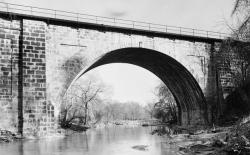
The Carrollton Viaduct over Gwynn's Falls was the first masonry railroad viaduct constructed in the United States. This structure proved the feasibility of using a viaduct to transport railway vehicles across wide and deep valleys.
Innovations
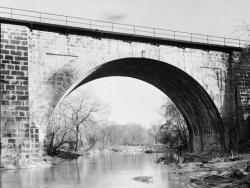
The Carrollton Viaduct over Gwynn's Falls was the first masonry railroad viaduct constructed in the United States. This structure proved the feasibility of using a viaduct to transport railway vehicles across wide and deep valleys.
The concept for the viaduct came from international…
Read More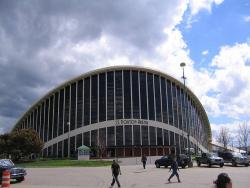
The Dorton Arena was the first use of a cable-supported roof system in the world. Commissioned in 1949 by North Carolina State Fair manager J.S. Dorton, the new building was intended to be a livestock judging pavilion. Architect Matthew Nowicki (1910 - 1950) proposed a structure that…
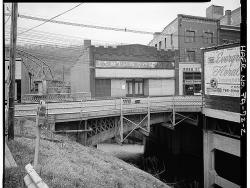
Not only was Dunlap's Creek Bridge the first cast-iron bridge in America, it was the first metal bridge anywhere to use what its builder, Capt. Richard Delafield, U.S. Army Corps of Engineers, described as "standardized, interchangeable, manufactured parts." The bridge was built as part of…
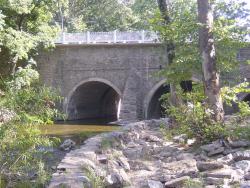
"For 273 years, the little stone bridge that carries Frankford Ave. across Pennypack Creek has been doing its humble job with a minimum of attention..."
- Gerald McKelvey, The Philadelphia Inquirer, September 16, 1970
Built more than a century before the reign of Napoleon,…
Read More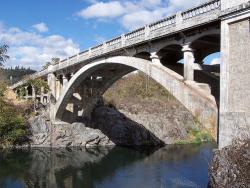
The Rogue River Bridge was the most advanced concrete bridge in America when it was built. Distinguished bridge engineer Conde McCullough employed the techniques of Frenchman Eugene Freyssinet to create thin, graceful concrete arches for this seven-span structure.
Pre-compression of the…
Read More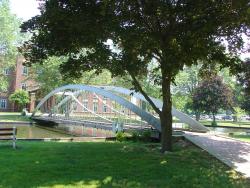
Designed, patented, and built by Thomas W.H. Moseley, this arched 96-foot span bridge preceded by years the standard use of wrought iron for bridges. For the first time in the United States, Moseley incorporated the use of riveted wrought-iron plates for the triangular-shaped top chord.
…
Read More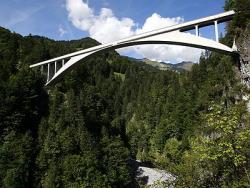
The Salginatobel Bridge, spanning the Salgina Valley ravine, is the earliest surviving three-hinged, hollow box arch bridge designed by Robert Maillart.
Maillart's 1901 invention of the concrete hollow box design became a major bridge building concept. In this design, the concrete arch…
Read More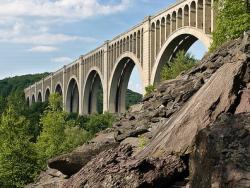
This majestic viaduct was built during the golden age of railroading. It was at the western end of a major readjustment in grade and alignment of the Erie-Lackawanna Railroad, and had double tracks to carry the trains across the valley of Tunkhannock Creek. The Hallstead cutoff (between Scranton…
Read More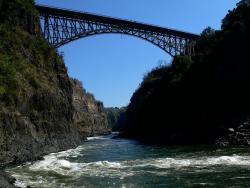
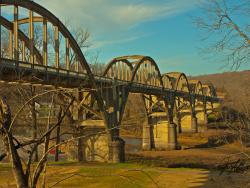
When this 1,850-foot concrete-arch highway bridge was built on the White River in a remote region of northern Arkansas - prior to the construction of upriver, flood-control dams - flash floods occurred frequently, sometimes causing the water to rise as much as one foot per hour. Construction…
Read More

